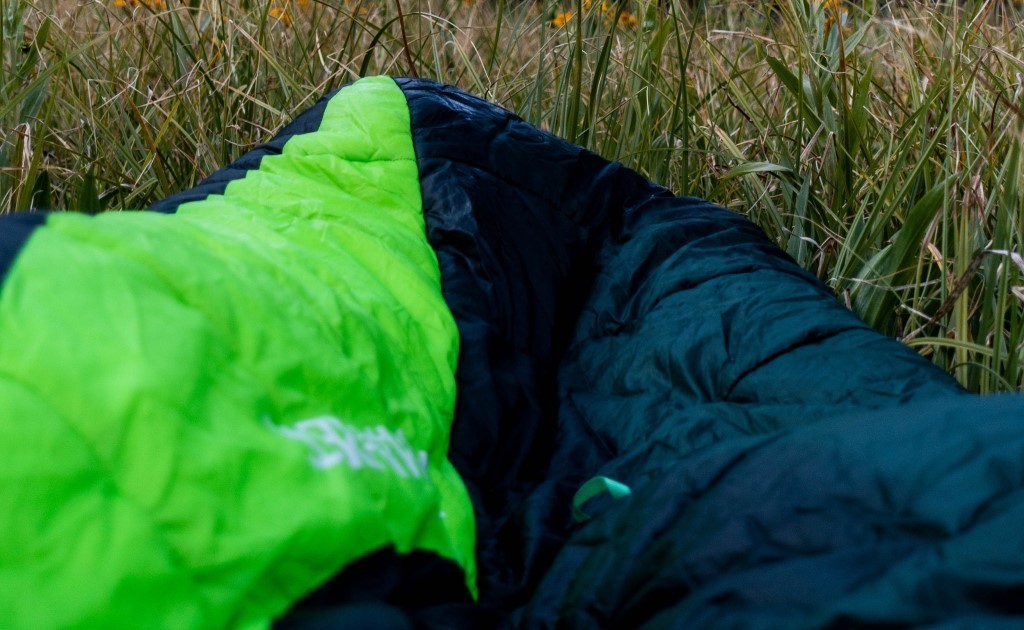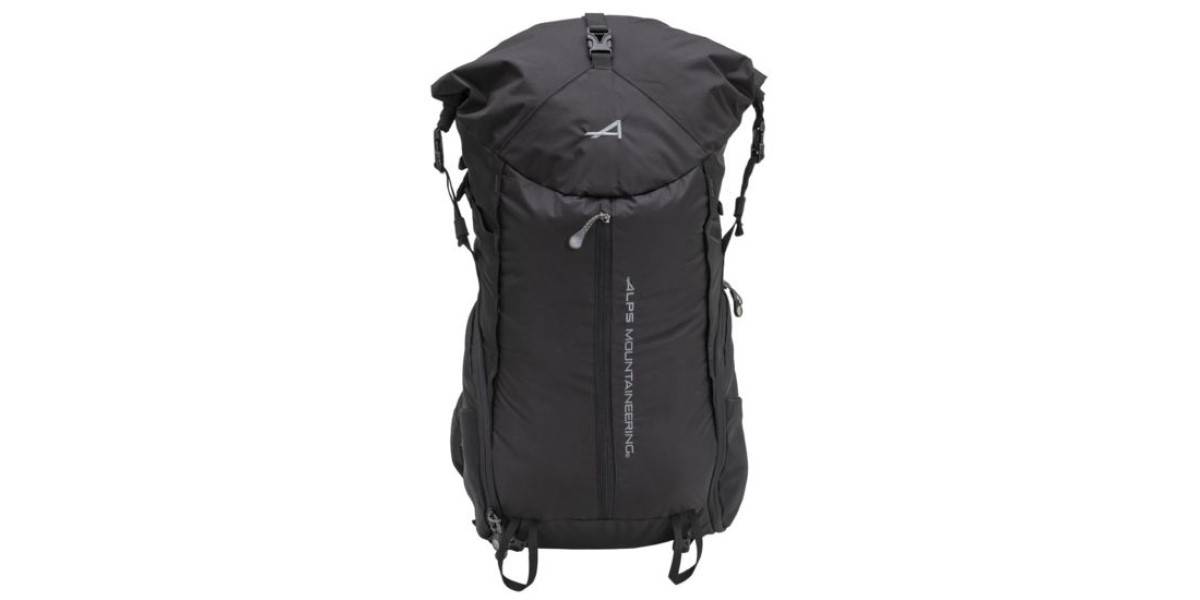This post contains affiliate links and as an Amazon Associate, Alpha and Omega Outdoors may earn from qualifying purchases.
Backcountry camping is camping in an area that is not accessible by car. It usually involves hiking or backpacking to get to the campsite. Backcountry camping can be done anywhere but is most popular in national parks and wilderness areas.
Table of Contents
- Why Camp In The Backcountry
- How To Prepare For Backcountry Camping
- The Benefits Of Backcountry Camping Vs Other Types Of Camping
- Tips On What To Pack In Your Backcountry Camping Backpack
- Backcountry Camping Gear
- Backcountry Camping Hacks – Ways To Make Your Trip Easier!
- How To Set Up A Backcountry Campsite
- How To Filter Water While Backcountry Camping
- How To Start A Backcountry Campfire
- 5 Backcountry Camping Recipes To Make On Your Trip!
- How To Avoid Backcountry Camping Hazards
- What To Do If You Get Lost While Backcountry Camping
- What Animals To Watch Out For While Backcountry Camping
- How To Stay Safe While Backcountry Camping
- Leave No Trace – Backcountry Camping Guidelines
- How To Pack Out Your Trash While Backcountry Camping
- The Best Backcountry Camping Locations In The US
- Frequently Asked Questions About Backcountry Camping
- Final Thoughts – What Is Backcountry Camping – A Beginners Guide
Why Camp In The Backcountry
There are many reasons why people choose to camp in the backcountry. For some, it is the challenge of reaching a remote location. Others enjoy the peace and quiet that can be found in the backcountry. And for others, it is simply the beauty of being surrounded by nature.
Whatever the reason, backcountry camping can be an unforgettable experience. It is important to remember, however, that backcountry camping is not for everyone. It can be challenging and even dangerous if you are not prepared.
How To Prepare For Backcountry Camping
Research Your Area
If you are planning a backcountry camping trip, the first step is to research the area. Learn about the terrain, the weather, and any potential hazards. This information will help you plan for a safe and enjoyable trip.
Check If You Need A Backcountry Permit
Next, you will need to find out if you need to obtain a backcountry permit. This is required in many national parks and wilderness areas; however, they are not required everywhere. In crowded areas, the permit will help government officials keep track of visitors and ensure that everyone is following the rules.
Plan Your Gear For Backcountry Camping
It is also important to pack carefully for a backcountry camping trip. Bring only the essentials and make sure your gear is lightweight and easy to carry.
Be Bear Aware
If you are backcountry camping in an area where bears live, it is important to be aware of the dangers they pose. Bears are attracted to food, so it is important to keep all of your food and garbage securely stored. More tips on camping in bear country can be found here.
A backcountry camping trip can be a great way to experience the beauty of nature. Just make sure you are prepared before you go. Research the area, obtain the necessary permits, and pack carefully. And most importantly, be aware of the potential dangers. With proper planning and preparation, you can ensure a safe and enjoyable backcountry camping trip.
The Benefits Of Backcountry Camping Vs Other Types Of Camping
There are many benefits to backcountry camping over other types of camping. For one, backcountry camping is a great way to experience nature and the beauty of the wilderness. It can also be a challenge and an adventure to reach a remote location.
Another benefit of backcountry camping is that it is usually much quieter than other types of camping. This is because backcountry campsites are often located away from roads and other people. This can be a great way to relax and enjoy the peace and quiet of the outdoors.
Finally, backcountry camping is often less expensive than other types of camping. This is because you do not need to pay for a campsite or campground fees. Backcountry camping can be a great way to save money while still enjoying the outdoors.
Tips On What To Pack In Your Backcountry Camping Backpack
When packing for a backcountry camping trip, you’ll need to consider what gear you’ll need to be safe and comfortable. Here are some tips on what to pack in your backpack:
- Tent and stakes
- Sleeping bag and pad
- Lightweight Cooking Stove
- Rain jacket and pants
- Hat and gloves
- Sunscreen and sunglasses
- Bug spray
- Bear horn or bear pepper spray (if camping in bear country)
- First-aid kit
- Fire starter and matches
- Knife
- Map and compass (or GPS)
- Extra food and water
- Hiking boots or shoes
- Clothes for all weather conditions including extra socks
- Toiletries
- Backpack
- Bear canister (if camping in bear country)
Now that you know what to pack in your backpack, get out there and enjoy the wilderness!
Backcountry Camping Gear
Backcountry camping can be a fun, rewarding and challenging experience. To make the most out of your backcountry camping trip, it is important to bring the right gear. Here are some of the essential items you will need for backcountry camping:
Tent – A good quality tent is essential for backcountry camping. Make sure to choose a tent that is lightweight, waterproof and easy to set up.
Sleeping bag – A warm, comfortable sleeping bag is a must for backcountry camping. Choose a sleeping bag that is rated for the temperature you will be camping in.
Camping stove – A camping stove is essential for cooking meals while backcountry camping. Choose a stove that is lightweight and easy to use.
Camping food – backcountry camping. Planning ahead and bringing the right food can make all the difference on a backcountry camping trip. Choose food that is easy to cook and nutritious.
Water filter – A water filter is a must for backcountry camping. Be sure to choose a water filter that is easy to use and effective at filtering out impurities.
First aid kit – A first aid kit is an essential item for backcountry camping. Be sure to pack a comprehensive first aid kit that includes items such as bandages, antiseptic and pain relievers.
With the right gear, backcountry camping can be a fun and rewarding experience. Be sure to choose gear that is lightweight, durable and easy to use. backcountry camping. Planning ahead and being prepared can make all the difference on a backcountry camping trip.
Backcountry Camping Hacks – Ways To Make Your Trip Easier!
When backcountry camping, there are a few things you can do to make your trip easier. Here are a few hacks that will help:
- Bring a backpacking stove – This will allow you to cook food and heat up water, which can come in handy when it’s cold outside.
- Bring a backpacking pillow – A backpacking pillow can be a lifesaver when trying to sleep in the backcountry.
- Wear proper clothing – Wearing the right clothing can make all the difference when backcountry camping. Make sure to bring layers that will keep you warm and dry.
- Bring a headlamp – A headlamp is an essential piece of gear when backcountry camping. It will help you see in the dark and can be used for emergencies.
- Pack a first aid kit – A first aid kit is always a good idea when backpacking, especially in the backcountry.
- Bring a map and compass – A map and compass are essential for backcountry trips. Make sure you know how to use them before you head out.
How To Set Up A Backcountry Campsite
When backcountry camping, it is important to set up your campsite in a way that makes you safe and comfortable. Here are some tips on how to do that:
- Choose a level spot for your tent. If you’re camping on a hill, try to find a spot that is not too steep. You don’t want your tent to roll down the hill in the middle of the night!
- Clear away any sharp objects or rocks that could puncture your tent.
- Make sure you are not camping too close to a river or stream. You don’t want your tent to flood if there is a sudden rainstorm.
- Some backcountry campsites will have a fire pit. If there is one, use it! If not, you can make your own by digging a small hole and lining it with rocks. Always bring a shovel with you when backcountry camping. You can use it to dig a latrine (a small hole for going to the bathroom), too.
- Be sure to pack out all of your trash when you leave. Leave your campsite the way you found it, or even better!
- If you are camping in an area with bears, make sure to store your food properly. Bears are attracted to the smell of food, so you don’t want to leave anything out that could attract them.
These are just a few tips on how to set up a backcountry campsite. By following these tips, you can ensure that you have a safe and comfortable trip.
How To Filter Water While Backcountry Camping
When backcountry camping, you’ll need to filter your water to ensure you’re drinking safe and clean water. There are a few different ways to filter water while backcountry camping, but the most common is using a portable water filter.
There are a few things to consider when choosing a portable water filter: the size of the filter, the type of filter, and the price.
- The size of the filter is important because you’ll want a filter that can easily fit into your backpack.
- The type of filter is also important because there are different types of filters for different purposes. For example, some filters are designed for backpacking and hiking, while others are designed for emergency situations.
- Finally, the price is important because you’ll want to find a filter that fits your budget.
Once you’ve considered these factors, you can choose the best portable water filter for your needs.
How To Start A Backcountry Campfire
Starting a backcountry campfire is an essential skill for anyone who wants to enjoy the great outdoors. The following are some tips on how to start a backcountry campfire:
- First, find an area that is free of flammable materials and is away from trees, shrubs, and dry grass.
- Next, gather your materials. You will need tinder, kindling, and fuelwood.
- Tinder is material that catches fire easily. Good options for tinder include dry grass, leaves, and bark.
- Kindling is small pieces of wood that catch fire easily from the heat of the flames.
- Fuelwood are the large pieces of wood that will keep the fire burning.
- Once you have gathered your materials, it is time to start building your campfire. Start by making a small teepee out of the tinder. Light the tinder using a lighter, matches, or other firestarter.
- Next, add the kindling to the burning teepee. Smallest pieces first and continue to add larger pieces until completely burning.
- Once the flames start to grow, add some of the fuelwood to the fire.
- Sit back, relax, and enjoy your campfire!
5 Backcountry Camping Recipes To Make On Your Trip!
If you’re backcountry camping, you’re probably looking to rough it. But that doesn’t mean you have to go without good food. Check out these five camping recipes to make on your trip:
Backcountry Chili
This hearty chili is perfect for a cold night in the backcountry. It’s easy to make and will keep you warm all night long.
Ingredients:
- 1 pound ground beef
- 1 onion, diced
- 1 green pepper, diced
- 2 tablespoons chili powder
- 1 can (15 ounces) diced tomatoes, undrained
- 1 can (15 ounces) red kidney beans, rinsed and drained
- 1 can (15 ounces) black beans, rinsed and drained
- 1 tablespoon sugar
- 1 teaspoon salt
- 1 teaspoon ground cumin
Directions:
In a large pot over medium heat, cook the beef, onion, and green pepper until the beef is browned. Add the chili powder and cook for 1 minute. Add the tomatoes, kidney beans, black beans, sugar, salt, and cumin. Simmer for 30 minutes.
Serves 4-6.
Backcountry Beef Stew
This beef stew is the perfect backcountry meal. It’s hearty and filling, and it will warm you up on a cold night.
Ingredients:
- 1 teaspoon salt
- 1/2 teaspoon black pepper
- 1 pound beef stew meat
- 1 onion, diced
- 3 carrots, peeled and diced
- 3 potatoes, peeled and diced
- 1 can (14.5 ounces) diced tomatoes, undrained
- 1 can (10.75 ounces) condensed beef broth
- 1 tablespoon Worcestershire sauce
Directions:
Sprinkle the salt and pepper over the beef. In a large pot over medium heat, cook the beef until it’s browned. Add the onion, carrots, potatoes, tomatoes, beef broth, and Worcestershire sauce. Simmer for 1 1/2 hours.
Serves 4-6.
Backcountry Chicken and Rice
This backcountry camping recipe is a winner. It’s easy to make, and it’s packed with protein and carbs to keep you going all day long.
Ingredients:
- 1 tablespoon olive oil
- 1 onion, diced
- 2 cups uncooked rice
- 4 cups chicken broth
- 1 can (14.5 ounces) diced tomatoes, undrained
- 1 teaspoon salt
- 1/2 teaspoon black pepper
- 2 chicken breasts, cooked and shredded
Directions:
In a large pot over medium heat, heat the olive oil and cook the onion until it’s softened. Add the rice and cook for 1 minute. Add the chicken broth, tomatoes, salt, and pepper. Bring to a boil. Reduce the heat to low and simmer for 20 minutes, or until the rice is cooked. Stir in the chicken and cook for 5 minutes.
Serves 6.
Backcountry Beef and Bean Burritos
These beef and bean burritos are perfect for backcountry camping. They’re easy to make, and they’ll fill you up after a long day on the trail.
Ingredients:
- 1 tablespoon olive oil
- 1 onion, diced
- 1 pound ground beef
- 1 can (15 ounces) black beans, rinsed and drained
- 1 can (14.5 ounces) diced tomatoes, undrained
- 1 tablespoon chili powder
- 1 teaspoon cumin
- 1 teaspoon salt
- 1/2 teaspoon black pepper
- 8-10 burrito-sized tortillas
Directions:
In a large pot over medium heat, heat the olive oil and cook the onion until it’s softened. Add the ground beef and cook until it’s browned. Add the black beans, tomatoes, chili powder, cumin, salt, and pepper. Simmer for 15 minutes.
Lay out a tortilla. Spoon 1/2 cup of the beef and bean mixture onto the tortilla. Roll it up and place it in a backcountry-safe container. Repeat with the remaining tortillas.
Serves 8-10.
Backcountry Macaroni and Cheese
This backcountry mac and cheese is sure to be a hit. It’s easy to make, and it’s packed with cheesy goodness.
Ingredients:
- 1 package (7 ounces) elbow macaroni
- 2 tablespoons butter
- 2 tablespoons all-purpose flour
- 1 teaspoon salt
- 1/4 teaspoon black pepper
- 2 cups milk
- 2 cups shredded cheddar cheese
Directions:
Cook the macaroni according to the package directions. In a large pot over medium heat, melt the butter. Stir in the flour, salt, and pepper. Add the milk and cook until it’s thickened. Stir in the cheddar cheese until it’s melted. Add the cooked macaroni and stir until it’s coated with the cheese sauce.
Serves 4-6.
How To Avoid Backcountry Camping Hazards
Backcountry camping can be a lot of fun, but it can also be dangerous if you’re not prepared. Here are a few tips on how to avoid backcountry camping hazards:
- Make sure you are aware of the potential dangers before you go. Know where the safe routes are, and be prepared for any emergencies that may occur.
- Pack the proper gear for backcountry camping, including a map and compass, a first-aid kit, and plenty of food and water.
- Be aware of your surroundings at all times, and don’t take unnecessary risks. If you’re not sure about something, it’s always better to err on the side of caution.
- Never camp alone, and make sure someone knows where you are going and when you plan to return.
- Be prepared for the worst-case scenario, and always have a backup plan.
Backcountry camping can be a great experience, but it’s important to be prepared and aware of the potential hazards. By following these tips, you can ensure that you have a safe and enjoyable trip.
What To Do If You Get Lost While Backcountry Camping
If you are backcountry camping and get lost, here are some things you can do to find your way back:
- If you have a map and compass, orient yourself using the map and compass and try to backtrack your steps.
- If you have a GPS, try to use the GPS to find your way back.
- If you are with a group, have everyone stay together and try to find your way back as a group.
- If you are alone, stay where you are and wait for rescuers to come to you. Try to signal for help using a whistle or flashlight.
- Once you are found, be sure to tell someone about your experience so they can help prevent others from getting lost.
What Animals To Watch Out For While Backcountry Camping
Backcountry camping can be a lot of fun, but there are some things you need to watch out for. One of the biggest dangers is encountering animals while you’re out in the wilderness. While many animals are docile and won’t bother you, there are a few that you need to be aware of.
The first animal to watch out for is bears. Bears are may visit to campsites because they’re looking for food. They’ll rummage through your belongings and if they find food, they’ll eat it. To avoid attracting bears, you should keep your campsite clean and free of food odors. You should also never leave food out in the open or in your tent.
Another animal to watch out for is snakes. Snakes are attracted to campsites because they’re looking for rodents to eat. If you see a snake, don’t try to kill it or capture it. Just leave it alone and it will eventually go away.
The last animal to watch out for is mountain lions. Mountain lions may visit campsites because they’re looking for prey. If you see a mountain lion, don’t run away. Instead, make yourself as big as possible and make a lot of noise. Mountain lions are more likely to attack if they think you’re weak or scared.
So, what animals should you watch out for while backcountry camping? Bears, snakes, and mountain lions are the three most dangerous animals you could encounter. Be sure to take precautions to avoid attracting them to your campsite and always be aware of your surroundings.
How To Stay Safe While Backcountry Camping
Backcountry camping can be an incredibly rewarding experience, but it’s important to remember to stay safe while you’re out there. Here are a few tips to help you out:
- Make sure you’re ready before you set out. Know the route you’re taking and make sure you’re familiar with the local wildlife.
- Pack enough food and water for your trip, and be sure to pack some extra in case of emergencies.
- Make sure you have a first aid kit with you and know how to use it.
- Be aware of your surroundings at all times. If you see something that doesn’t look right, or feels off, trust your instincts and back away.
- Leave a trip plan with someone back at home so they know where you are and when you’re plannind to be back.
- Make sure you’re carrying some form of communication, like a satellite phone or radio, in case you need to call for help.
- And finally, remember to enjoy yourself! Backcountry camping is an incredible experience and one that you’ll never forget. Stay safe out there and have fun!
Leave No Trace – Backcountry Camping Guidelines
Camping is a great way to get back to nature and really enjoy the outdoors. However, backcountry camping can also be a lot of work if you’re not ready. In order to make your backcountry camping trip as enjoyable and stress-free as possible, it’s important to follow some basic Leave No Trace guidelines.
The Leave No Trace Center for Outdoor Ethics is a national non-profit organization that works to promote and educate people on how to enjoy the outdoors responsibly. Their seven principles are:
Plan Ahead And Prepare
Before heading out on your backcountry camping trip, it’s important to take some time to plan and prepare. This includes things like checking the weather forecast, getting a map of the area, and packing the appropriate gear. It’s also important to make sure that you are physically and mentally prepared for your trip.
Travel And Camp On Durable Surfaces
When backcountry camping, it’s important to choose your campsite carefully. Look for a spot that is on a durable surface, such as gravel or sand, and try to avoid areas with delicate vegetation. Once you’ve found a good campsite, be sure to take care of it by not digging trenches or damaging any vegetation.
Dispose Of Waste Properly
Always pack out what you pack in and be sure to dispose of human waste properly. When backcountry camping, it’s important to use a “cat hole” method of digging a small hole (6-8 inches deep) for solid waste. For liquid waste, you can either bury it or pack it out in a leak-proof container.
Leave What You Find
When backcountry camping, it’s important to leave the area as you found it. This means not taking any rocks, plants, or other natural items from the area. If you do find something that you think someone might want, like a lost piece of gear, be sure to pack it out with you.
Minimize Campfire Impacts
If you do have a campfire, it’s important to minimize the impact that it has on the environment. Only use dead and downed wood for fuel, and be sure to build your fire in a way that will minimize its impact on the surrounding area. When you’re done with your fire, be sure to completely extinguish it.
Respect Wildlife
When backcountry camping, it’s important to respect the local wildlife. This means not feeding the animals or disturbing their natural habitat. If you do see an animal, be sure to give it plenty of space and do not try to approach it.
Be Considerate Of Other Visitors
When backcountry camping, it’s important to be considerate of other people who might be using the area. This means keeping your noise level down, not littering, and being respectful of other campers’ privacy.
By following these simple guidelines, you can help to protect the environment and ensure that everyone has a safe and enjoyable backcountry camping experience.
How To Pack Out Your Trash While Backcountry Camping
When backcountry camping, it is important to pack out all of your trash. This includes everything from food wrappers to broken camping gear. Here are a few tips on how to do this effectively:
- Pack food and garbage in separate bags. This will help keep your campsite clean and free of pests.
- Pack out all of your trash, even if it’s biodegradable. This includes items like fruit peels and eggshells.
- Pack out used toilet paper and feminine hygiene products. These items should not be left in the backcountry.
- Bring along a small shovel or trowel to bury human waste. This is necessary for Leave No Trace camping.
The Best Backcountry Camping Locations In The US
Backcountry camping is a great way to get back to nature and away from the hustle and bustle of everyday life. If you’re looking for some of the best backcountry camping locations in the US, here are four great options.
Yosemite National Park
Yosemite National Park is a stunning location for backcountry camping, with its towering mountains, pristine lakes, and forests full of wildlife. There are over 750 miles of trails to explore in Yosemite, so you’re sure to find the perfect spot for your backcountry camping adventure.
Yellowstone National Park
Yellowstone National Park is another great option for backcountry camping, with its diverse landscape of forests, mountains, and rivers. There are over 1,000 miles of trails to explore in Yellowstone, so you’re sure to find the perfect spot for your backcountry camping adventure.
Glacier National Park
Glacier National Park is a beautiful location for backcountry camping, with its glaciers, forests, and alpine meadows. There are over 700 miles of trails to explore in Glacier National Park, so you’re sure to find the perfect spot for your backcountry camping adventure.
Grand Canyon National Park
The Grand Canyon is a stunning location for backcountry camping, with its towering cliffs, deep canyons, and views of the Colorado River. There are over 200 miles of trails to explore in the Grand Canyon, so you’re sure to find the perfect spot for your backcountry camping adventure.
Other Locations
Frequently Asked Questions About Backcountry Camping
What is backcountry camping?
Backcountry camping is a type of camping that takes place in outdoor areas away from roads and settlements. Campers must carry all of their supplies with them, and there are no facilities or services available. backcountry camping can be a great way to get away from civilization and enjoy the natural world.
What do I need to go backcountry camping?
The most important thing you need for backcountry camping is a backpacking permit. You can get permits from the ranger station or visitor center in the area you plan to camp. You will also need a backpacking stove, a tent, and a sleeping bag. It is also a good idea to bring a map and compass and to know how to use them.
What are some backcountry camping tips?
Some backcountry camping tips include:
- Choose a campsite carefully. Look for a flat, dry spot away from streams or lakes.
- Set up your tent in an area that will not be affected by rising water levels.
- Be aware of your surroundings. Watch for wildlife, and be sure to secure your food so that animals cannot get to it.
- Practice Leave No Trace principles. This means packing out all of your trash and being careful not to damage the natural environment.
How do you get ready for backcountry camping?
There are a few things you should do to get ready for backcountry camping:
- Choose the right gear. You will need a backpacking permit, a backpacking stove, a tent, and a sleeping bag.
- Plan your route. Make sure you know where you are going and how to get there. Bring a map and compass, and be familiar with the area.
- Pack your food and supplies. Be sure to bring enough food and water for your trip.
- Follow Leave No Trace principles. This means packing out all of your trash and being careful not to damage the natural environment.
What’s considered backcountry?
In general, the backcountry is any remote area that is not easily accessible by road. backcountry camping can take place in a variety of settings, including mountains, forests, and deserts.
Is it safe to camp in the backcountry?
Backcountry camping can be safe if you are prepared and take the necessary precautions. Be sure to get a backpacking permit, and to familiarize yourself with the area before you go. Bring a map and compass, and be sure to pack enough food and water for your trip.
Final Thoughts – What Is Backcountry Camping – A Beginners Guide
Backcountry camping can be an amazing experience. It allows you to get away from the hustle and bustle of everyday life and enjoy the beauty of nature. However, it is important to be prepared before heading into the backcountry. Camping in the backcountry can be challenging, but if you follow the proper steps and are prepared, it can be a safe and enjoyable experience. Thanks for reading!
Featured Image From WikiMedia Commons












